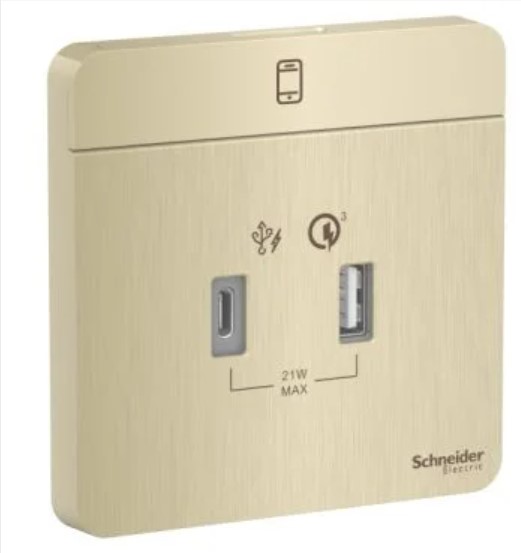In our modern world, electrical sockets and switches are essential components of any electrical system. They serve as the gateway for electricity to flow into our homes and workplaces, powering our devices and providing comfort. In this blog, we will delve into the different types of electrical sockets and switches, their functionalities, and how to choose the right ones for your needs.
What Are Electrical Sockets?
Electrical sockets, often referred to as outlets, are devices that provide a point for electrical connections. They allow appliances and devices to draw power from the electrical system in a safe and efficient manner. Electrical sockets come in various designs and configurations, depending on the region and specific requirements.
In homes, you typically find two types of electrical sockets: Type A and Type B in the United States, Type C (commonly used in Europe), and various other types in different parts of the world. Each type has its specifications regarding voltage and current, which is crucial for the safe operation of appliances.
Types of Electrical Sockets
- Type A Sockets: Commonly used in North America, these sockets have two flat parallel slots. They are suitable for devices that require lower voltage and current.
- Type B Sockets: Similar to Type A, Type B sockets also have an additional grounding pin for safety. They are often used for heavier appliances that require more power.
- Type C Sockets: Known as the European standard, Type C sockets are round and designed for two-pin plugs. They are prevalent in many countries outside of North America.
- Specialized Sockets: Certain appliances may require specialized sockets, such as those used for air conditioners or electric vehicles. These sockets are designed to handle higher currents and voltages.
Understanding Electrical Switches
Electrical switches are devices that control the flow of electricity in a circuit. They can either open or close a circuit, allowing or stopping the flow of electricity to a device. Electrical switches come in various forms, including toggle switches, dimmer switches, and smart switches.
- Toggle Switches: These are the most common type of electrical switch found in homes. They are simple to operate and typically have a lever that you can push up or down to turn a light or device on or off.
- Dimmer Switches: Dimmer switches allow users to adjust the brightness of a light fixture. They are ideal for creating different moods in a room and can help save energy by reducing the light output when full brightness is not needed.
- Smart Switches: With the rise of smart home technology, smart switches have gained popularity. These switches can be controlled remotely via smartphones or smart assistants, providing convenience and flexibility in managing your electrical appliances.
The Importance of Choosing the Right Electrical Sockets and Switches
Selecting the right electrical sockets and switches is crucial for several reasons:
- Safety: Using the appropriate socket type ensures that appliances operate safely and efficiently. Mismatched sockets can lead to overheating, short circuits, or even electrical fires.
- Compatibility: Different devices have varying power requirements. Choosing the correct socket and switch ensures compatibility with your appliances, allowing them to function optimally.
- Aesthetics: The design and style of electrical sockets and switches can significantly impact the overall appearance of your home. You can choose options that match your interior design and enhance the aesthetic appeal of your space.
Tips for Selecting Electrical Sockets and Switches
- Assess Your Needs: Consider the types of devices you will be using and their power requirements. For high-powered appliances, make sure to choose sockets that can handle the load.
- Check Compatibility: Ensure that the sockets and switches you select are compatible with the plugs of your devices. For instance, if you have devices that require Type B sockets, don’t install Type A sockets.
- Consider Future Needs: Think about your future electrical needs. If you plan to add more devices or appliances, consider installing additional sockets to accommodate growth.
- Choose Quality Brands: Opt for reputable brands like Schneider Electric eShop. Quality products are designed to meet safety standards and ensure long-lasting performance.
Installing Electrical Sockets and Switches
While it might be tempting to install electrical sockets and switches yourself, it’s important to consider safety. Hiring a licensed electrician is always recommended. They can ensure that installations meet local electrical codes and standards, minimizing the risk of electrical hazards.
During installation, the electrician will:
- Assess the location for sockets and switches based on convenience and safety.
- Ensure that the wiring is done correctly to prevent any overload.
- Test the installations to ensure that everything works as intended.
Maintenance of Electrical Sockets and Switches
Proper maintenance of electrical sockets and switches is vital for ensuring their longevity and safety. Here are some tips for maintaining them:
- Regular Inspection: Periodically check sockets and switches for any signs of wear, such as cracks, discoloration, or looseness. If you notice any issues, have them replaced promptly.
- Keep Dry: Ensure that sockets are not exposed to water or moisture, as this can lead to short circuits.
- Avoid Overloading: Do not overload sockets with multiple devices, as this can cause overheating and increase the risk of fire.
Conclusion
Electrical sockets and switches are integral to our daily lives, enabling us to power our devices safely and effectively. Understanding their types, functions, and importance helps us make informed decisions when choosing and maintaining them. Always prioritize safety and compatibility, and consider reputable brands like Schneider Electric eShop for your electrical needs. With the right sockets and switches, you can enjoy a safe and efficient electrical system in your home or workplace.



